The traditional jewelry-making process is a meticulous and time-consuming endeavor. No one can deny the skill and craftsmanship involved in hand-making rings or pendants; handcrafted personal ornaments always possess some uniqueness. However, the fact is that creating jewelry entirely by hand requires a significant amount of time, patience, and skill.

3D printing technology allows anyone to produce unique, high-quality jewelry while also providing a cheaper, simpler, and faster new solution for professional jewelers.The emergence of 3D printing technology has disrupted the jewelry market and inspired new tech-driven jewelry companies to offer convenient custom manufacturing services to customers.
Today, let’s take a look at the advantages of 3D printed jewelry, the best software for designing jewelry, the best 3D printers for printing jewelry, and the top 3D printing services that can bring your designs to life and deliver them to your door.
1. Why Choose 3D Printed Jewelry?
Most of the time, when we talk about 3D printed jewelry, we refer to 3D printing wax models that are then used to create molds, just like traditional jewelry-making. While it is possible to directly 3D print with precious metals, most jewelers use a 3D printer to create models based on digital designs, effectively replacing hours or days of manual carving with the push of a button. Depending on the size of the 3D printer, you can print nearly ten wax models at once.
Using a 3D printer to make jewelry has many other advantages. You can create prototypes with 3D printing to ensure that the final product meets your and your customers’ requirements. This is especially useful if you decide to produce multiple versions of the same design.

3D printed jewelry samples allow customers to try on and approve before final production. Author: Jenny Wu, “Lace” (Source: “Lace”)
2. Design Your Own Jewelry
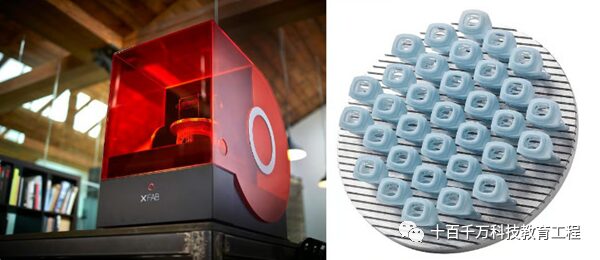
3Design jewelry design software (Source: 3Design)
The first step in 3D printing jewelry is digital design. If you already have a concept in mind, you must use computer-aided design (CAD) software to create it. There are various 3D design software options available to suit your needs.
If you are not interested in designing jewelry from scratch, editing existing designs might be more acceptable. There are a wealth of stunning designs available in 3D design libraries like Thingiverse.
Have you searched through all the 3D model libraries and still can’t find the perfect design? If you want to use a beloved antique heirloom or a friend’s creation, consider trying 3D scanning.
Magic Monkey Network offers a variety of 3D scanners to choose from.
Jewelry design software
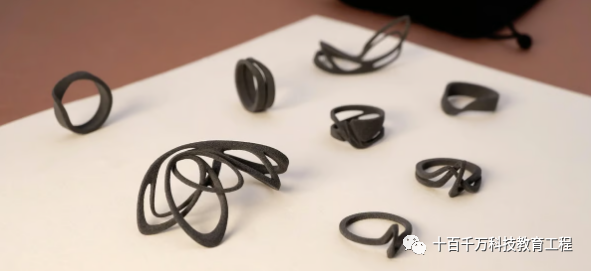
CAD software is perfect for structural arts like jewelry design. It allows you to maintain precision within the small range required for jewelry design. Additionally, it helps establish uniformity where needed, such as for earrings, wedding rings, and any mass-produced products.
Most CAD programs with 3D modeling capabilities can support the overall concept of jewelry design. The basic principles and proportions are sometimes the same as designing small machinery. If your design needs to be laid flat, like some types of necklace pendants, you may find that non-specific 2D CAD programs are also very useful.
However, if you are looking for CAD specifically for jewelry design, especially professional-grade CAD, there are some additional considerations that will make your work easier:
Jewelry-specific templates: These templates allow you to focus more on the creative aspect of design rather than worrying about the technical parts. Using basic standardized jewelry components (like earring backs) templates can enable you to easily comply with industry standards while showcasing the uniqueness of your design.
Realistic modeling: Since jewelry is a visual medium, programs with 3D modeling capabilities can show you what your design will look like in the real world and help you identify any flaws or issues before creating a prototype. This way, you won’t feel heartbroken when you discover problems during the design process.
Simple interface: A clean workspace with easily accessible tools and functions will minimize your learning curve and maximize your design time.
3. 3D Printing Jewelry
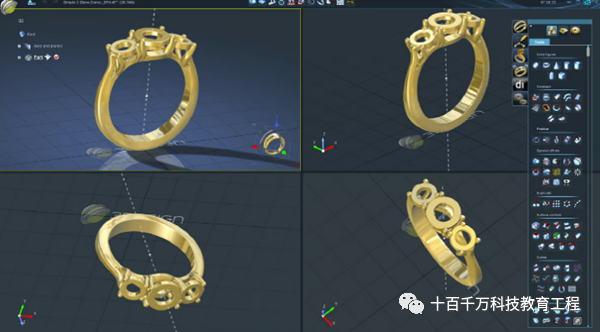
Cloud Factory directly 3D prints pure silver jewelry on SLM Solutions metal 3D printers (Source: Cloud Factory)
When it comes to 3D printing jewelry, we mention two main methods: one is direct 3D printing, which prints the final piece directly in metal or plastic; the other is lost wax casting, which involves 3D printing a wax model and then casting the piece based on the wax model.
Direct 3D Printing
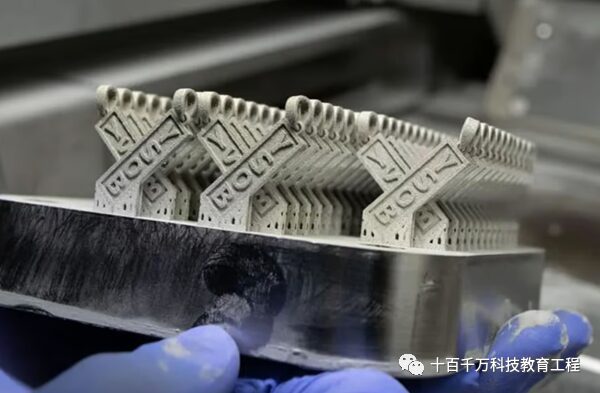
You can directly 3D print jewelry with precious metals. Most jewelers do not use this method with 3D printers because the price of 3D printers is not cheap for independent jewelers.
Direct 3D printing utilizes lasers to sinter metal powder particles together, using powder bed fusion technology, also known as selective laser melting (SLM) or metal laser powder bed fusion. You can also use another 3D printing technology called binder jetting, which is suitable for metals or polymers. The types of metals available depend on the 3D printer used.
A 3D printer filled with gold powder is an investment, but fortunately, unused materials can be reused in the next batch of jewelry when producing a batch. Additionally, you can print jewelry with polymers, ceramics, and non-precious metals.
Lost Wax Casting

Resin 3D printers from companies like Phrozen can 3D print fine jewelry molds with castable materials (Source: Phrozen)
Lost wax casting is the most popular method of 3D printing jewelry. It combines 3D printing with traditional mold-making techniques. The 3D printer replaces the practice of carving hard models from wax into the desired shape. Jewelers design using computer and jewelry design software or any computer-aided design (CAD) software, then 3D print the jewelry models using wax or other materials like resin. Resin cast models can be printed using stereolithography (SLA) or digital light processing (DLP). From this point, it returns to the traditional lost wax casting process.
If you are not familiar, the lost wax casting method involves wrapping wax or resin models in a plaster-like medium and then heating it to harden, causing the model to melt away and leave a mold, into which molten precious metal is injected. This is the traditional metal casting process. Once the metal solidifies, the mold is removed, and the item is carefully extracted and subjected to mechanical processing and polishing.
3D printers can not only create fine master models but can also customize digital files for jewelry in minutes and simultaneously print another model or 20 different models. This greatly accelerates the speed of design iteration and mass customization. This method is advantageous because you do not need special forms of metal; most metals can be used.
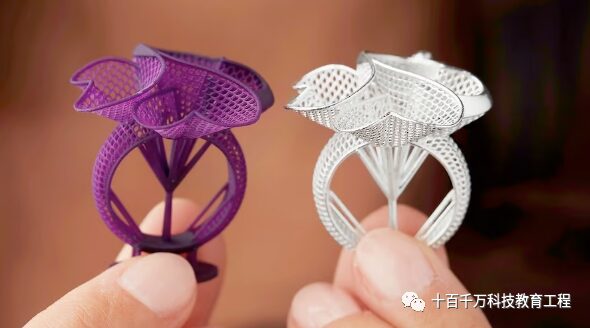
Resin 3D printing can produce highly detailed parts suitable for complex jewelry designs (Source: Formlabs)
Advantages of 3D Printed Design Models:
Speed: In short, 3D printing is much faster than hand-carving wax. Traditional methods require hours or even days to meticulously carve wax models, while 3D printers can create detailed models in just a few hours. Furthermore, changes are much easier, as you just need to modify the digital file and print another version.
Complexity: Compared to hand carving, 3D printers can print more complex and intricate geometries. You can print anything that CAD software can design, allowing even artists lacking carving skills to achieve outstanding designs. Additionally, depending on the piece, you can create geometries that are almost impossible to achieve through hand carving.
Customization: Since the original master model is stored as a digital CAD file, you can quickly modify the master model according to customer requirements. You can provide customized jewelry and easily modify the model if future wearers are dissatisfied with the initial design.
Mass Production: Depending on the capabilities of the 3D printer, you can print dozens of different wax models at once.
Replication: Another convenience brought by 3D printing is that you can replicate old jewelry. Using a 3D scanner, you can recreate existing jewelry into a digital model, clean it up in CAD software, and print it out.
Cost-Effectiveness: The materials used in jewelry-grade 3D printing are minimal. While castable wax materials may be more expensive than regular printing materials, the large quantity used in a batch helps reduce material costs.
Rapid Prototyping: Before casting the final piece, place stones into the 3D printed model to ensure a perfect fit and gain customer approval. Customers can try on 3D printed models to get a more realistic sense of the final piece than a 2D image.
4. Wax and Casting Materials
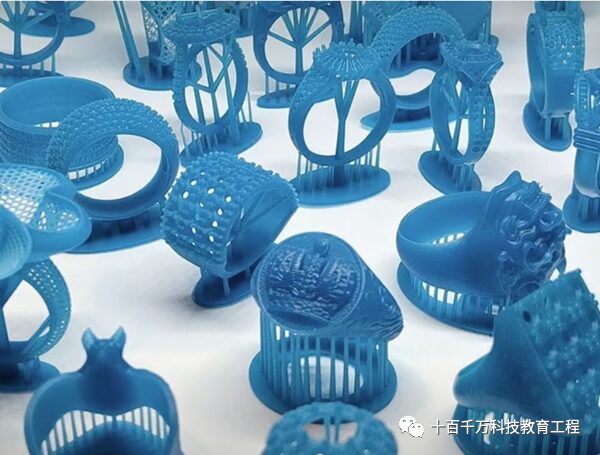
BlueCast X5 resin jewelry model (Source: BlueCast)
Casting materials vary. Of course, you can print using pure wax, but newer materials (like castable resin) have stronger characteristics during the casting process, such as better strength and cleaner burning.
For example, polymethyl methacrylate (PMMA) is an acrylic plastic with excellent burning properties, commonly used in industrial casting. These materials are not always suitable for direct replacement of wax, as some materials may negatively interact with the investment materials used for phosphate bonding and plaster bonding. Therefore, ensure your casting materials are compatible with your investment materials.
Your 3D printer may only be compatible with the wax manufactured by your equipment vendor. However, if your printer is compatible with third-party materials, be mindful of the following when purchasing casting materials:
Melting Time: How long does it take for wax or castable resin materials to completely melt or burn out from the mold? Two hours or five hours?
Ash Level: Low ash or ash-free wax materials leave almost no residue or soot in the mold after burning out, while other wax materials may require a thorough cleaning of the mold.
Low Shrinkage: All wax and castable materials will have some shrinkage, so it’s important to consider this, and understanding the shrinkage coefficient is crucial; the shrinkage coefficient should be listed in the material’s technical data sheet.
Low Moisture Absorption: Most castable resins will absorb moisture without covering, so it’s best to choose a resin with some moisture resistance initially, then store it in a cool, dry place.
For more information on printing with wax and other materials, please refer to our article on “Patterns and Models”.
5. Jewelry 3D Printers
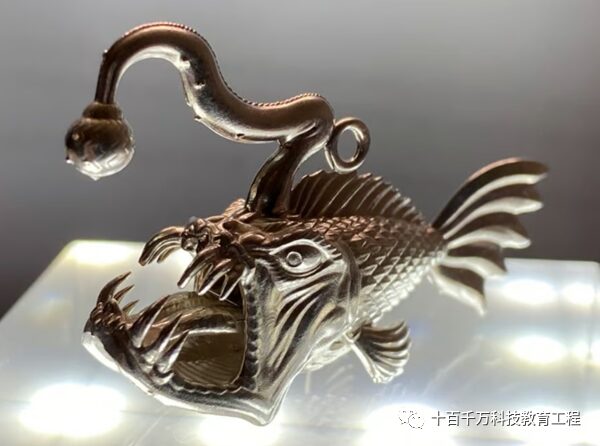
Decorations printed with X-vest synthetic embedding materials (Source: BlueCast)
When selecting a jewelry 3D printer, the first consideration should be the technology. Most jewelers looking to print casting models will choose resin-type 3D printers due to their high printing resolution. Specialized casting wax resins enable jewelers to print fine models that can burn out cleanly.
There are fewer options for directly printing precious metal jewelry.
Considerations when selecting a printer:
Resolution: Jewelry is small, so the finer the details the printer can print, the better. You should choose a machine capable of producing the finest details, ideally down to 10 microns. For reference, the average width of human hair is 75 microns.
Printing Speed: It’s hard to imagine that hand-carving wax figures would be faster than 3D printing wax figures, so when it comes to speed, we must mention 3D printers. Ideally, you can choose a machine that can adjust the speed to achieve super-fast speeds with less detail for prototypes, and extremely fine details, which usually take longer.
Material Compatibility: Choose a printer that is not limited to materials from a single manufacturer. It’s possible that only third-party produced wax resins are most suitable for your needs. Proprietary materials are usually more expensive than third-party materials, but some printers can perfectly use their own resins for printing, reducing the chances of trial and error.
Cost: When purchasing a printer, you should consider not only the price of the printer but also the maintenance and materials costs. While jewelry 3D printers can recoup the investment in a few months, it’s still important to keep an eye on the budget.
Exposure: If your design has fine features and smooth surfaces, you need to pay attention to LCD technology. Some LCD machines produce models with pixelated surfaces, which can affect the final casting of the piece unless you spend time doing some post-processing.
Volume: If you only plan to make one to six models at a time, a small batch machine will suffice, but if you think you will be mass-customizing hundreds of rings or pendants, you will need to choose a large batch machine.
Accessories: Your models cannot be printed directly from the printer. You will also need some additional equipment, such as a cleaning machine and curing machine (although these can be optional). So look for a company that can provide a full set of equipment.
No matter how good the printer’s surface performance is, to assess whether the printer is suitable for your workbench, you can request print samples from the manufacturer. Most manufacturers are happy to showcase the actual performance of their printers.